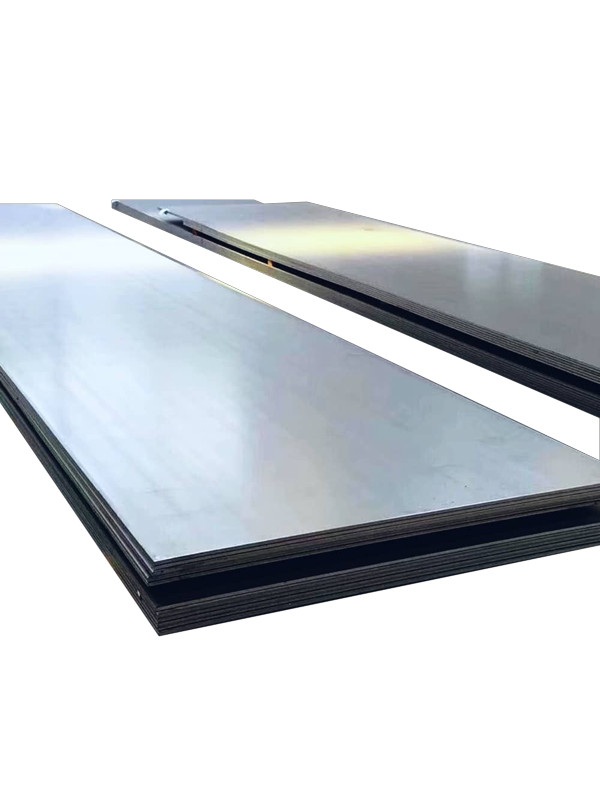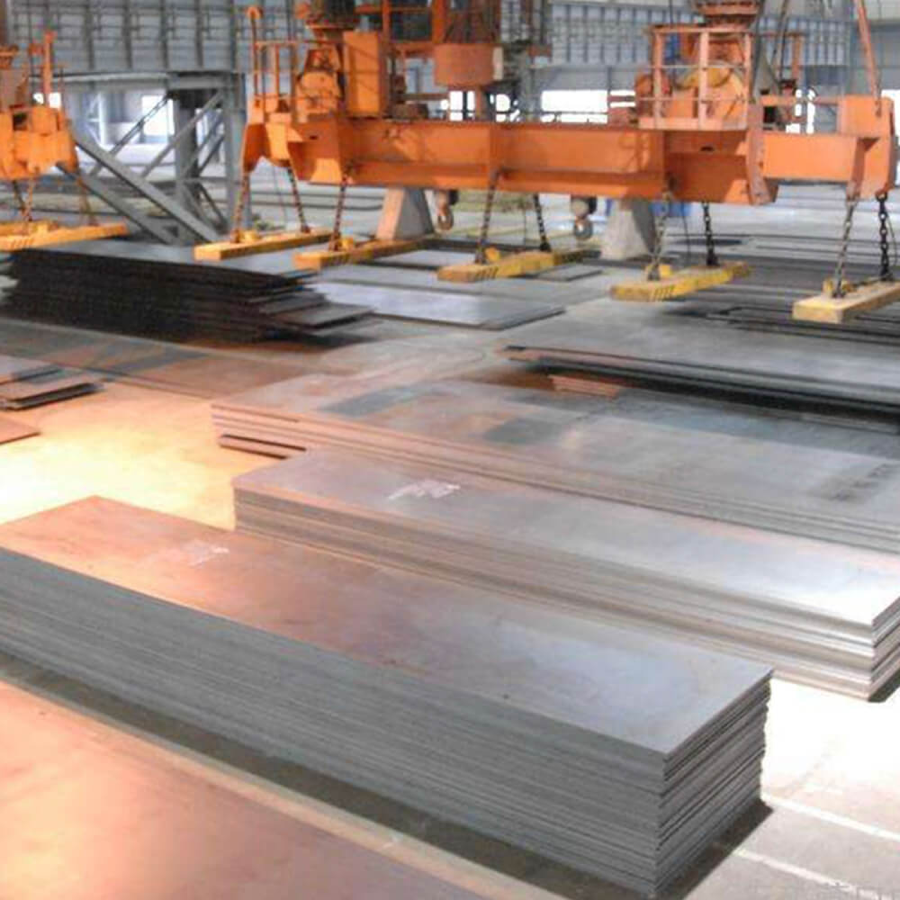What are cold-rolled and hot-rolled steel plates
Cold rolling is made by rolling a hot-rolled coil under the recrystallization temperature at normal temperature. Cold rolled steel plate is the steel plate produced by the cold rolling process, referred to as cold plate. Hot rolling uses a continuous casting slab or blooming slab as raw material, which is heated by a walking beam heating furnace, descaled by high-pressure water, and then enters the roughing mill. The roughing material enters the finishing mill after head cutting, and tail cutting, and then enters the computer-controlled rolling. After the final rolling, it is cooled by laminar flow and coiled by a coiler to become a straight coil.
Difference between cold rolled and hot rolled steel plates
Cold-rolled and hot-rolled steel plates are mainly different in the following points:
1. The two are essentially different:
(1) The essence of cold rolled steel plate: cold rolled steel is the steel produced by cold rolling. Cold rolling is the process of further rolling a steel plate to a target thickness at room temperature.
(2) The essence of hot rolled coiled steel plate: hot rolled steel is a kind of steel that is rolled above the recrystallization temperature.
2. The two have different characteristics:
(1) Characteristics of cold-rolled steel plate: the thickness of cold-rolled steel plate is more accurate, and the surface is smooth and beautiful. At the same time, it also has various excellent mechanical properties, especially in processing performance.
(2) Characteristics of hot rolled steel plate: during hot rolling, the metal plasticity is high and the deformation resistance is low, which greatly reduces the energy consumption of metal deformation. Hot rolling can improve the processing properties of metals and alloys, that is, the coarse grains in the casting state are broken, the cracks are significantly healed, the casting defects are reduced or eliminated, the as-cast structure is transformed into the deformed structure, and the processing properties of alloys are improved.
3. The processing requirements of the two are different:
(1) Processing requirements of cold rolled steel plate: cold rolled steel requires high rolling power and low rolling efficiency and intermediate annealing is required to eliminate work hardening during rolling, so the cost is also high.
(2) Processing requirements of hot rolled steel plate: hot rolled steel is easy to roll and has high rolling efficiency. Hot rolling temperature includes start rolling temperature and finishes rolling temperature. The start rolling temperature is mainly determined according to about 80% of the solidus temperature in the alloy phase diagram, while the finish rolling temperature is determined according to the alloy plasticity diagram. Generally, it is required to be controlled above the recrystallization temperature of the alloy.

Manufacturing Processes of Cold-Rolled and Hot-Rolled Steel Plate
The manufacturing processes provided by different steel plate wholesale suppliers of the cold-rolled steel plate and hot-rolled steel plate differ significantly, resulting in distinct characteristics and properties. Understanding these processes is crucial for comprehending the differences between the two types of steel plates. Let's delve into the manufacturing processes of cold-rolled and hot-rolled steel plates:
Cold-Rolled Steel Plate Manufacturing Process:
Initial Steel Preparation: The manufacturing process begins with hot-rolled steel coils, which are cleaned to remove surface impurities and scale.
Cold Rolling: The cleaned steel coils are then fed through a series of rollers at room temperature. This process involves reducing the thickness of the steel by compressing it between the rollers. The steel undergoes multiple passes through the rollers to achieve the desired thickness.
Annealing: After cold rolling, the steel undergoes an annealing process. Annealing involves heating the steel to a specific temperature and then slowly cooling it. This process relieves internal stresses, refines the microstructure, and improves the mechanical properties of the steel.
Skin-Passing: To further enhance the surface finish and remove any imperfections, the cold-rolled steel plate may undergo a skin-passing process. This involves subjecting the plate to a light cold rolling between polished rollers.
Coiling: The final cold-rolled steel plate is coiled and ready for further processing or shipment. It possesses a smooth surface finish, precise dimensions, and improved mechanical properties compared to hot-rolled steel plate.

Hot-Rolled Steel Plate Manufacturing Process:
Steel Casting: The manufacturing process of hot-rolled steel plate begins with casting molten steel into slabs or billets. These large metal pieces are formed by pouring the molten steel into molds and allowing it to solidify.
Heating and Hot Rolling: The slabs or billets are then heated to high temperatures, typically above 1,000°C (1,800°F), in a furnace. Once heated, the steel is fed through a series of rolling mills, where it is gradually reduced in thickness and shaped into a plate. The hot rolling process involves intense heat and mechanical pressure, resulting in the formation of the desired plate shape.
Cooling and Descaling: After hot rolling, the steel plate undergoes a rapid cooling process, known as quenching, to stabilize its microstructure. Following quenching, the plate is descaled by removing the surface scale and impurities through various methods, such as high-pressure water jets or acid baths.
Levelling and Cutting: The hot-rolled steel plate is then leveled to remove any warping or unevenness. It may also undergo cutting operations to obtain the desired dimensions.
Inspection and Packaging: The final hot-rolled steel plate is inspected for quality, dimensional accuracy, and surface defects. It is then packaged by steel product suppliers and prepared for distribution or further processing.
The manufacturing processes of cold-rolled and hot-rolled steel plate result in different structural characteristics and properties. Understanding these processes is essential for selecting the appropriate type of steel plate based on specific project requirements.